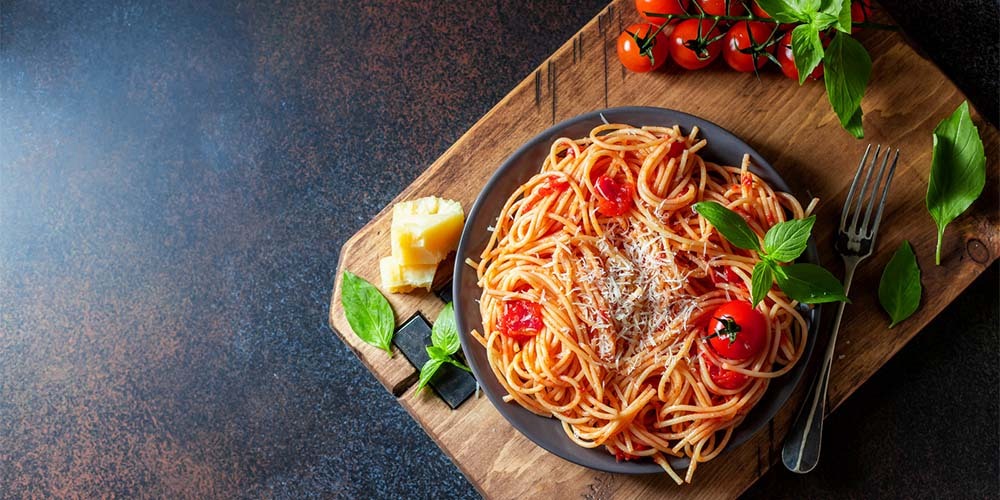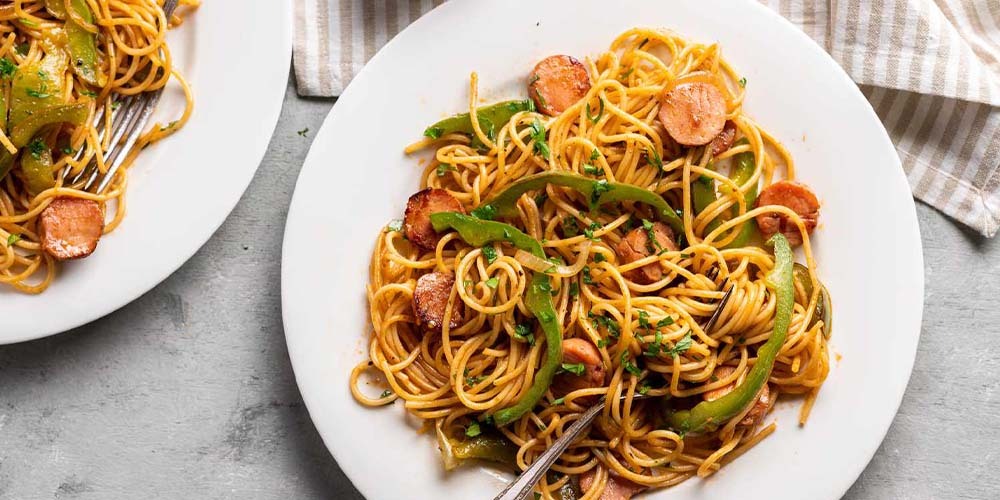Spaghetti noodles are long, thin cylindrical pasta strands that are a popular staple in Italian cuisine. They are made from durum wheat semolina or a combination of semolina and water. Pasta noodles are typically boiled until cooked al dente, which means they retain a firm texture when bitten. Prepare for a culinary adventure with a creative and tasty spaghetti noodle recipe. Begin by cooking al dente spaghetti noodles according to the package instructions. Olive oil should be used to sauté minced garlic and onions until aromatic and golden. Add diced tomatoes, tomato sauce, and a sprinkle of Italian seasoning, letting the flavors meld together. For a twist, toss in some cooked shrimp or grilled chicken to add protein and depth. Once the sauce is simmering, combine it with the cooked noodles, coating them evenly. Add fresh basil leaves and a hefty sprinkle of Parmesan cheese to finish. You will be craving more after eating this delicious dish overflowing with flavors.
The History And Origins Of Spaghetti Noodles

The spaghetti pasta has a long, cylindrical shape, and its history and roots date back to ancient Italy. While the sources remain uncertain, evidence suggests that various civilizations enjoyed pasta-like dishes, including the Etruscans, Greeks, and Romans. Pasta was first mentioned in writing in Italy in the 12th century. However, it wasn’t until the Arab occupation of Sicily in the 9th century that the Arab influence brought pasta-making techniques to the region. These techniques eventually spread throughout Italy, leading to the development of various pasta shapes. Over the centuries, spaghetti gained popularity and became a staple of Italian cuisine. Today, it has become an iconic symbol of Italian gastronomy and is savored worldwide in numerous delicious pasta dishes.
Different Types Of Pasta Noodles

A rich assortment of pasta noodles is available, each with its distinctive shape, texture, and culinary applications. Here are a few popular types:
Spaghetti Noodles: Long, thin cylindrical strands that are versatile and pair well with various sauces.
Penne: Short, cylindrical tubes with angled ends, perfect for capturing thick, chunky sauces.
Fusilli: Spiral-shaped noodles that hold sauces and ingredients exceptionally well, adding a delightful twist to dishes.
Farfalle: Bowtie-shaped pasta, great for incorporating into pasta salads or dishes with creamy sauces.
Linguine: Flat, thin noodles similar to spaghetti but wider, often paired with seafood or light sauces.
Rigatoni: Large, tube-shaped pasta with ridges, perfect for hearty and robust sauces.
Lasagna: Flat, vast sheets of pasta used in layered baked dishes like lasagna.
Numerous varieties of pasta noodles exist, each possessing distinctive attributes and serving specific purposes in culinary practices. Consider these examples.
Exploring The Nutritional Value Of Spaghetti Noodles

Pasta noodles provide various nutritional benefits, such as the long, cylindrical variety. These noodles primarily comprise durum wheat semolina, making them a valuable source of complex carbohydrates. They provide energy for the body and are particularly suitable for active individuals. Also, pasta noodles contain dietary fiber, aiding digestion and promoting a feeling of fullness. While they are low in fat and free from cholesterol, the nutritional profile of the noodles can be influenced by the cooking method and accompanying ingredients. By incorporating nutrient-rich elements like vegetables, lean proteins, and healthy sauces, pasta noodles can form a balanced and satisfying meal that contributes to overall nutritional well-being. Peri-Peri GUYS offers various delicious dishes which are full of nutrition. Visit us and enjoy the delightful taste of healthy and halal foods.
Gluten-free Spaghetti Noodles Alternatives For Dietary Restrictions

For individuals with gluten restrictions, numerous alternatives to traditional wheat-based pasta noodles cater to their dietary needs. One option is a gluten-free pasta made from grains other than wheat, such as rice, corn, quinoa, or legumes like lentils or chickpeas. These gluten-free alternatives provide a similar texture and shape to traditional pasta noodles, making them suitable substitutes. Spiralized veggies like zucchini or sweet potatoes can replace traditional noodles with a low-carb, gluten-free option. They can be easily prepared and offer a nutritious base for pasta dishes. Another option is shirataki noodles, made from konjac yam, which are virtually carb-free and gluten-free, making them ideal for low-carb diets. With these gluten-free spaghetti noodle alternatives, individuals with dietary restrictions can still enjoy a wide range of pasta-inspired dishes while adhering to their specific needs.

